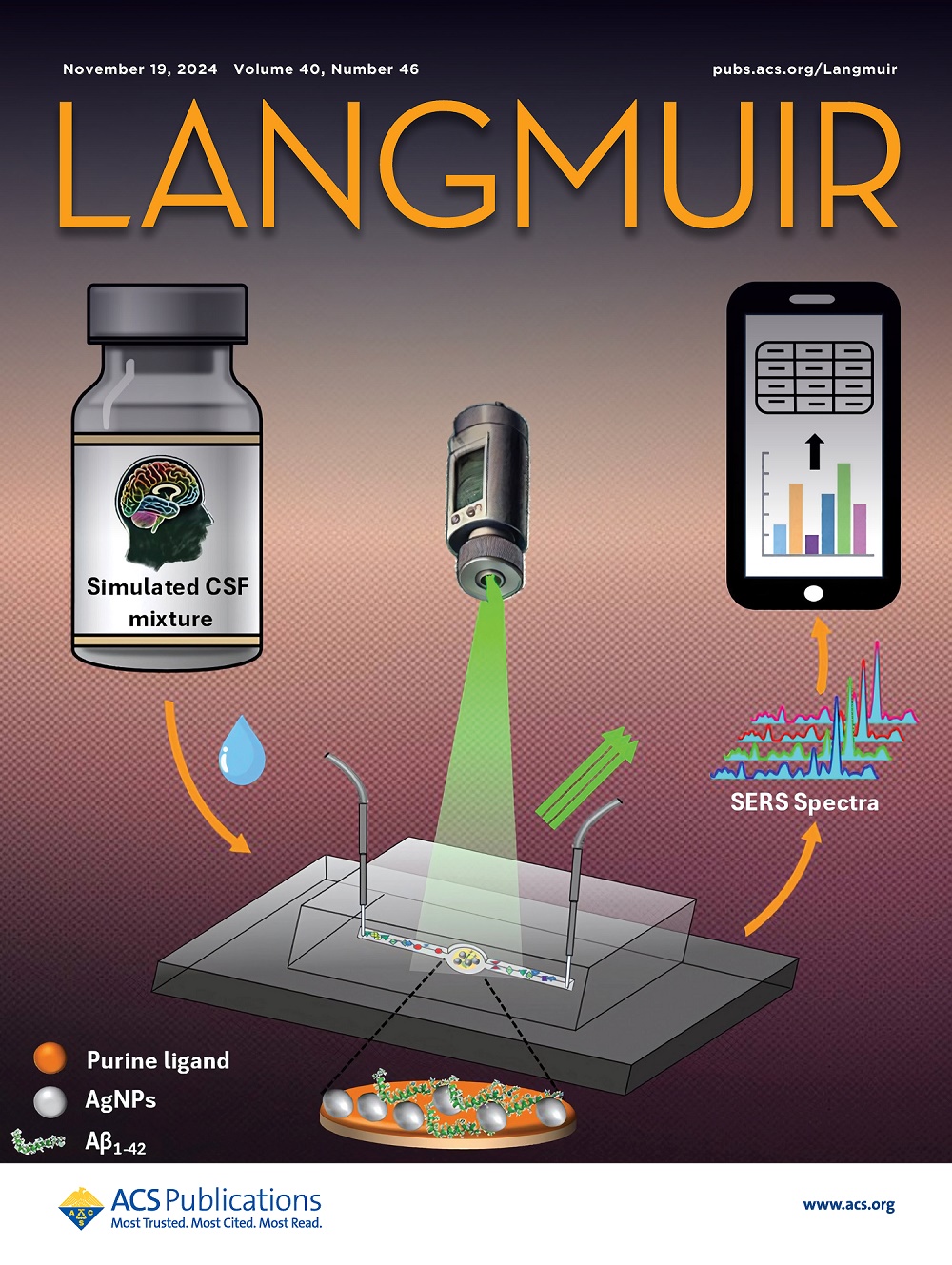水和甲醇中体积氢纳米泡稳定性的分子动力学研究
IF 3.7
2区 化学
Q2 CHEMISTRY, MULTIDISCIPLINARY
引用次数: 0
摘要
大块氢纳米泡(NBs)在氢的生成和利用中起着关键作用。然而,它们在不同溶剂中的稳定机制尚不完全清楚。本研究采用分子动力学模拟研究了散装NBs在水和甲醇中的稳定性和演化,并通过实验测量提供了验证。结果表明,NBs在甲醇中的溶解倾向于较低的初始气体密度,表明其稳定性低于在水中的稳定性。在稳定条件下,水中约80%的氢分子留在NBs中,而在甲醇中仅约40%留在NBs中,这与实验观察到的甲醇较高的氢溶解度一致。进一步分析表明,水中的NBs氢表现出更薄的气液界面、更低的内压和气体密度,这主要与它较低的氢溶解度有关。利用力学平衡和临界半径理论,我们确定了NB稳定性的氢浓度阈值在水中为0.96 ~ 1.44 mol/L,在甲醇中为2.69 ~ 2.88 mol/L。此外,甲醇中的氢分子表现出更剧烈的运动,更强的气液相互作用和更弱的氢键网络。本研究提供了分子水平的见解,以稳定散装氢NBs在不同的溶剂。本文章由计算机程序翻译,如有差异,请以英文原文为准。

Molecular Dynamics Insights into the Stability of Bulk Hydrogen Nanobubbles in Water and Methanol
Bulk hydrogen nanobubbles (NBs) play a key role in hydrogen generation and utilization. However, their stabilization mechanisms in different solvents remain not fully understood. This study employs molecular dynamics simulations to investigate the stability and evolution of bulk hydrogen NBs in water and methanol, with experimental measurements providing validation. The results show that NBs in methanol tend to dissolve at lower initial gas densities, indicating a lower stability compared to those in water. Under stable conditions, approximately 80% of hydrogen molecules remain inside NBs in water, while only about 40% remain in methanol, consistent with methanol’s higher hydrogen solubility observed experimentally. Further analysis reveals that hydrogen NBs in water exhibit a thinner gas–liquid interface as well as lower internal pressure and gas density, mainly related to its lower hydrogen solubility. Utilizing mechanical equilibrium and critical radius theory, we identify the hydrogen concentration thresholds for NB stability to be 0.96–1.44 mol/L in water and 2.69–2.88 mol/L in methanol. Additionally, hydrogen molecules in methanol exhibit more vigorous motion, stronger gas–liquid interactions, and a weaker hydrogen bond network. This study provides molecular-level insights into the stabilization of bulk hydrogen NBs in different solvents.
求助全文
通过发布文献求助,成功后即可免费获取论文全文。
去求助
来源期刊

Langmuir
化学-材料科学:综合
CiteScore
6.50
自引率
10.30%
发文量
1464
审稿时长
2.1 months
期刊介绍:
Langmuir is an interdisciplinary journal publishing articles in the following subject categories:
Colloids: surfactants and self-assembly, dispersions, emulsions, foams
Interfaces: adsorption, reactions, films, forces
Biological Interfaces: biocolloids, biomolecular and biomimetic materials
Materials: nano- and mesostructured materials, polymers, gels, liquid crystals
Electrochemistry: interfacial charge transfer, charge transport, electrocatalysis, electrokinetic phenomena, bioelectrochemistry
Devices and Applications: sensors, fluidics, patterning, catalysis, photonic crystals
However, when high-impact, original work is submitted that does not fit within the above categories, decisions to accept or decline such papers will be based on one criteria: What Would Irving Do?
Langmuir ranks #2 in citations out of 136 journals in the category of Physical Chemistry with 113,157 total citations. The journal received an Impact Factor of 4.384*.
This journal is also indexed in the categories of Materials Science (ranked #1) and Multidisciplinary Chemistry (ranked #5).
 求助内容:
求助内容: 应助结果提醒方式:
应助结果提醒方式:


